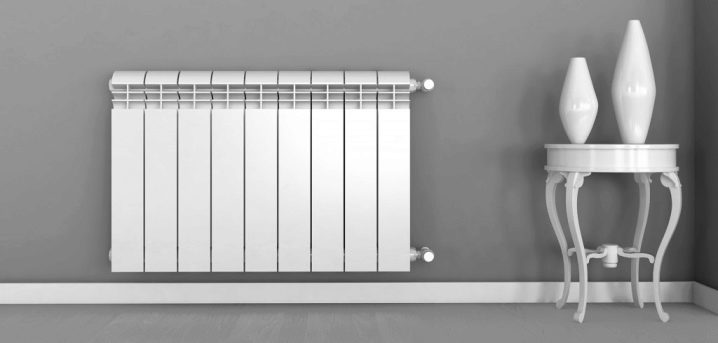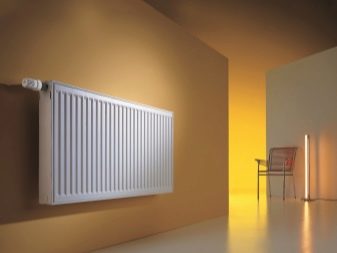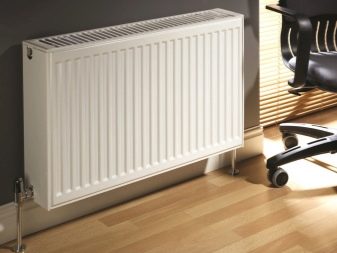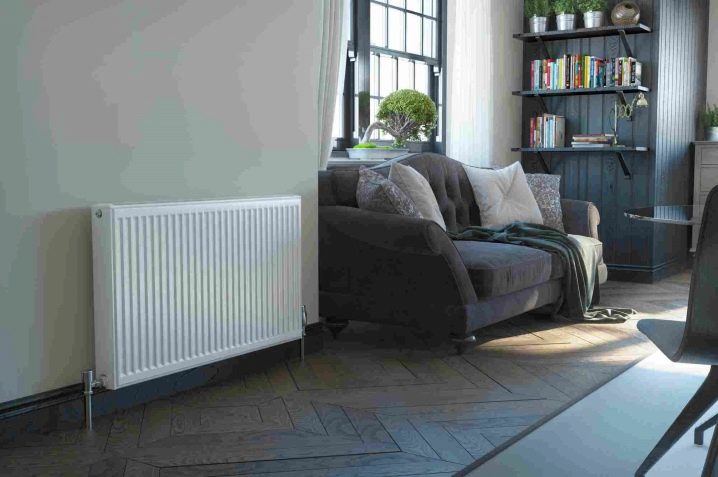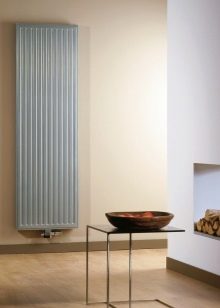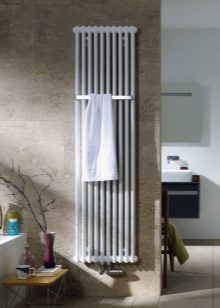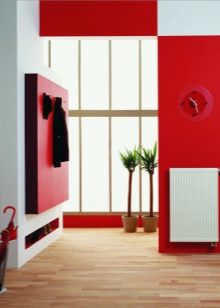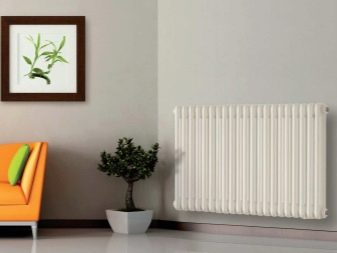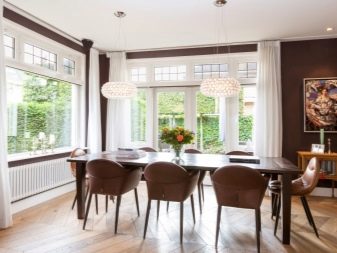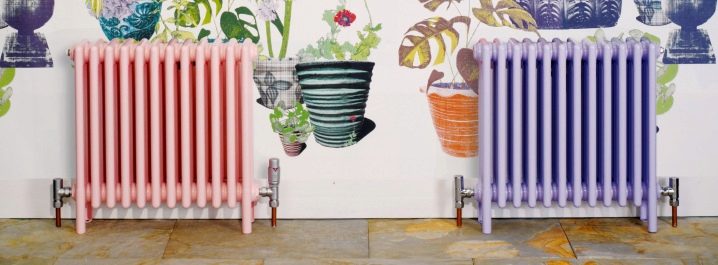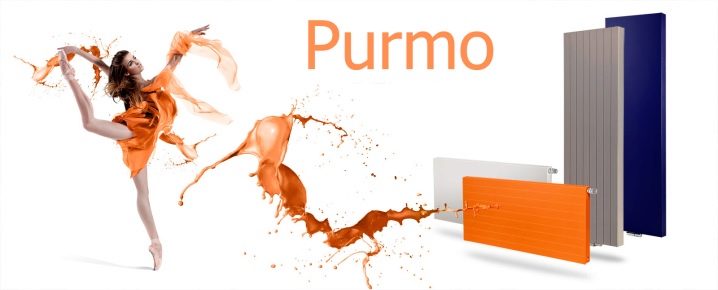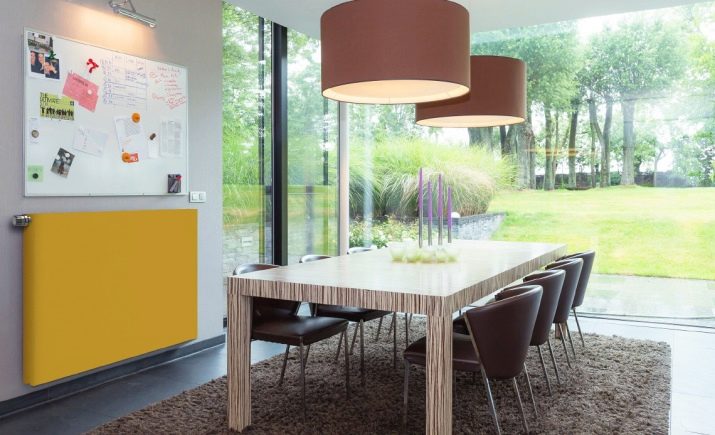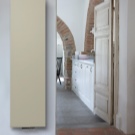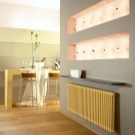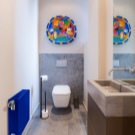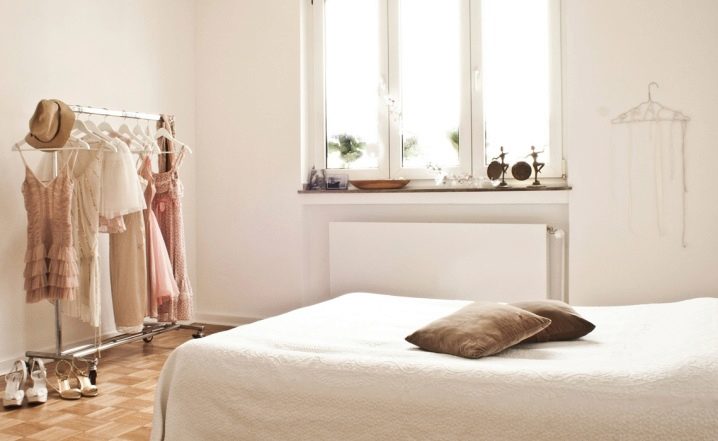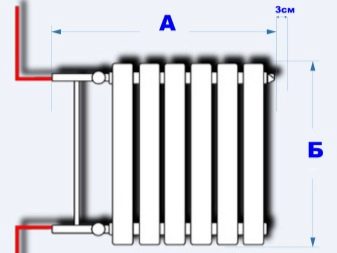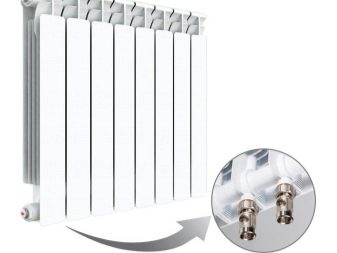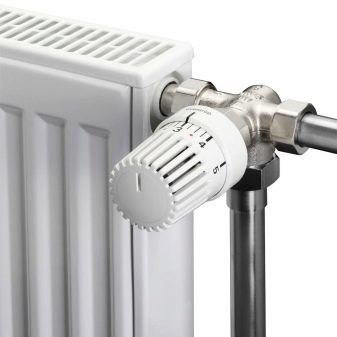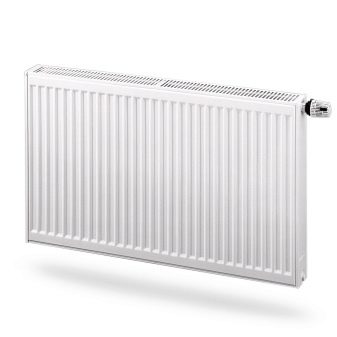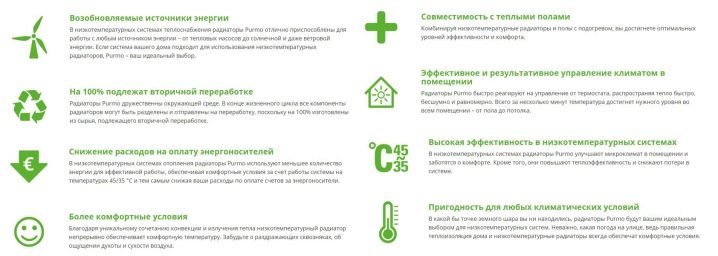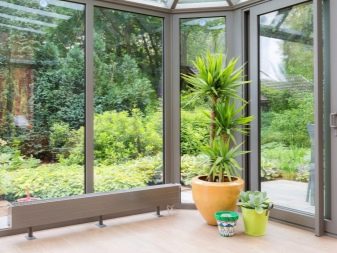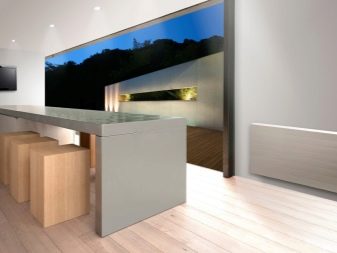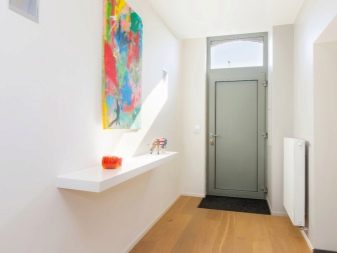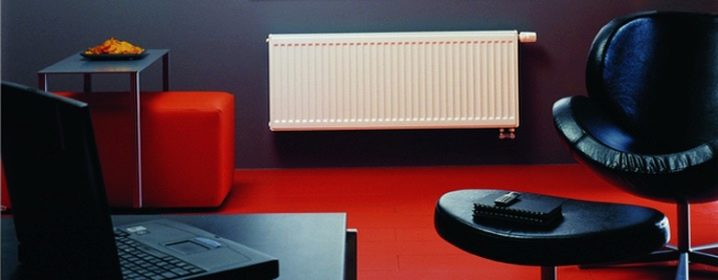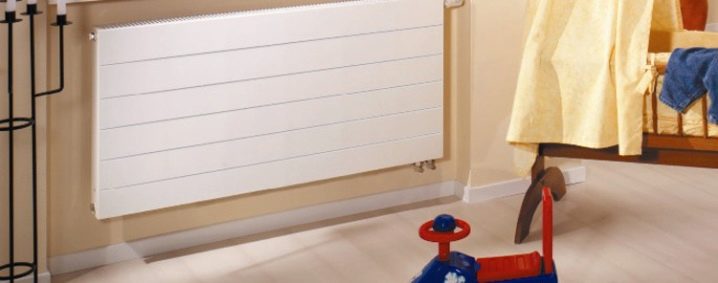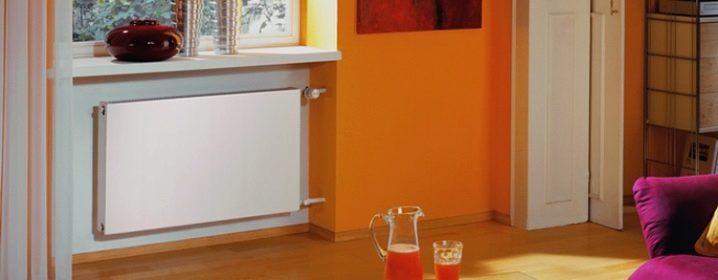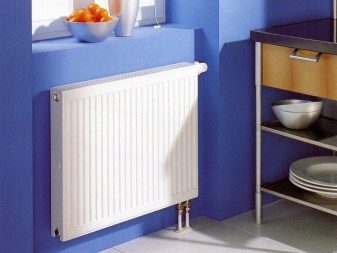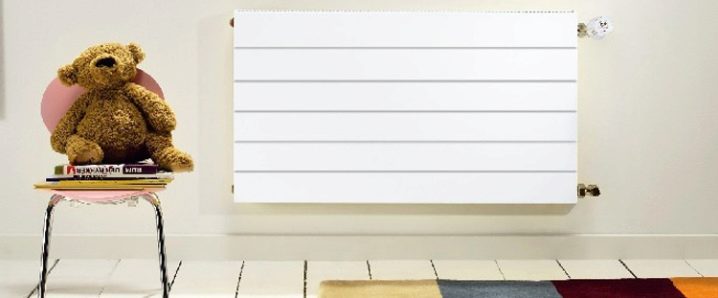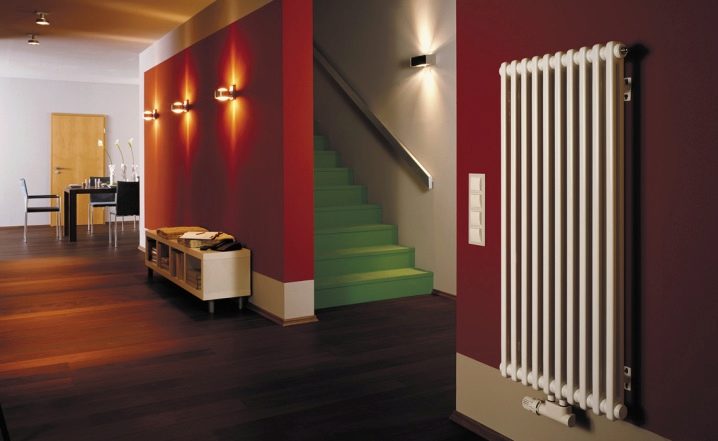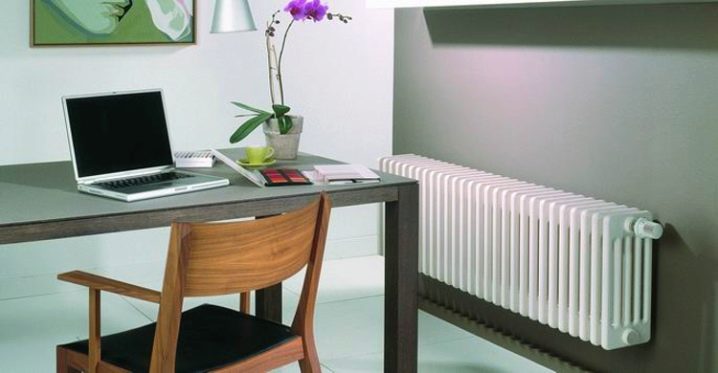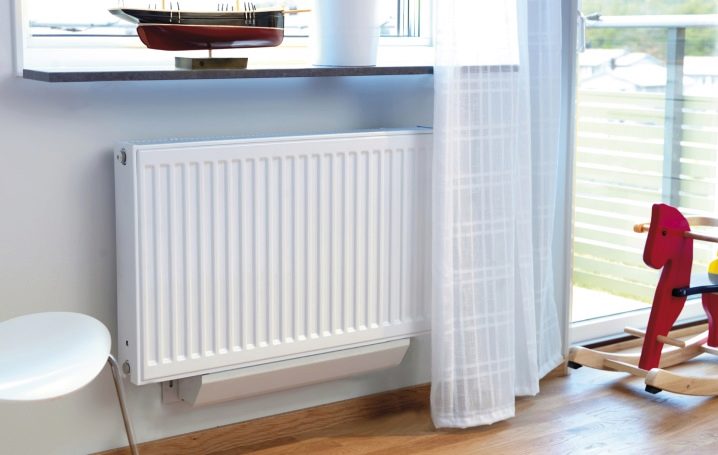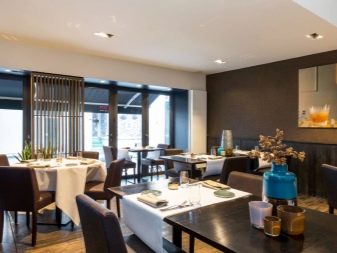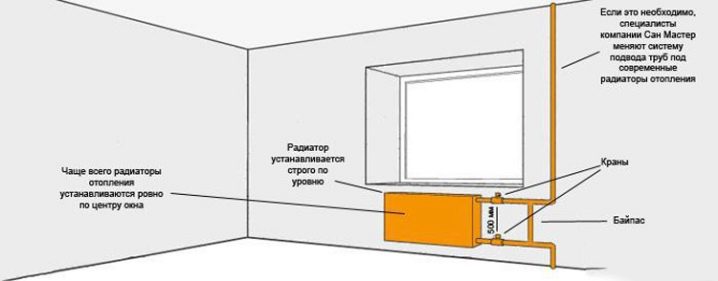Purmo heating radiators: design features and range overview

Radiators play a significant role in heating systems - they heat the air and distribute heat indoors. Modern manufacturers of heaters offer a large selection of a wide variety of designs. But the leaders in this diversity are not the first year remain heating radiators Purmo, won popularity in many European countries.
Kinds
The Purmo assortment includes groups of panel and tubular heaters. In each group, in turn, there are models that differ in connection method, purpose and parameters.
Panel
Panel steel batteries from Purmo are structures made of pressed sheets of high strength steel. When welding panels inside the device, channels are formed through which the coolant circulates.
In order to improve heat transfer, some products on the inside are equipped with metal fins. This group of devices is intended for heating residential premises, offices and social facilities. The model range includes radiators for rooms with normal conditions, including those with normal humidity, and structures with a special anti-corrosion coating (for corrosion protection, radiators are subjected to a hot-dip galvanizing process).
Moisture-resistant products can be used in bathrooms, bathhouses, indoor pools, in refrigerators, at car washes - everywhere where there is a constant high humidity. Branded panel batteries can be connected to pipes made of steel, copper, PVC with an anti-diffusion barrier, in which water or antifreeze circulates as a heat carrier. They can be installed both in one-pipe heating systems and in two-pipe ones.
Features of products allow their use in closed or small open systems with a thermal capacity of up to 25 kW. For narrow and high walls, the manufacturer offers vertical options for panel heaters.
Such products will be an excellent solution for rooms or office spaces where it is impossible to install conventional horizontal appliances, as well as for rooms with an unusual interior.
Also in the assortment of the company there are specialized hygienic radiators - for heating systems in hospitals, in shops for the production of food products, on other objects with increased requirements to hygiene.
The standard height of modern Finnish batteries is from 300 mm, however, there is an assortment of Purmo and devices up to 200 mm in height, which are suitable for installation under panoramic windows, in stores with wide windows, in buildings of unusual and special architecture (sports facilities, greenhouses) , in other rooms with a small distance from the floor to the window.
Tubular
Purmo tubular radiators are also made of low carbon steel and are made up of several tubes (for each model this amount can bedifferent) with a D-shaped profile. This type of profile allows for a higher heat output.
Between themselves, the tubes are connected by welding with the lower and upper headers. Such a system creates optimal conditions for the circulation of the coolant and the effective heating of the air in the room. And the high quality of the weld guarantees tightness and a long service life. Width and height of models may vary.
Among the tubular radiators there are a lot of decorative items that will not only warm the room, but also serve as a real decoration of the interior.
Specifications
Heating radiators Purmo - products of the same name company, the country-manufacturer of devices - Finland. The history of the company has more than half a century and now its branches operate not only in Finland, but also in Poland.
Today, Purmo is part of the Rettig Heating Group, a major concern, the largest manufacturer of heating appliances.
Manufacturers pay great attention to the quality and performance of products. However, most technical parameters depend on the type of radiator and its purpose.
Purmo panel heating radiators have the following characteristics:
- The material is cold rolled low carbon steel.
- Sheet metal thickness - 1.25 mm.
- Extreme working pressure - 10 bar.
- The maximum test pressure (when the heating unit and the heating system are switched to the heating mode) is 15 bar.
- The limiting t ° of the heat carrier is 110 ° С.
- Thermal power (heat emission) - 936, 738 and 840 watts (depending on the model).
The base color of the products is white. However, if necessary, you can order radiators of any color on a scale of RAL. Tubular devices have similar characteristics at the maximum test and working pressure, but they are able to withstand the temperature of the heat carrier up to 120 ° C.
The number of pipes in this type of radiator section varies from 2 to 6. From this indicator, in turn, depends on the depth of the product - from 63 to 215 mm and the heating power of the heater. The latter in two-pipe radiators will be equal to from 13 to 223 W in each section. In 6-pipe, it can reach 809 W per section.
The heat transfer rate is one of the most important when choosing a radiator, so it is important to know how to determine the power suitable for the selected room. The calculation is based on the area of the premises.
It is considered that for heating 1m² room with one window and ceilings up to 3 meters high, it takes about 100 watts.
If there are 2 windows in the room, then another 30% is added to the resulting value. Another 10% are added in the case of installation in the room fences or decorative panels. Another important parameter is the method of connecting the radiator to the general system. Panel radiators may have a side or bottom connection. In this case, the first option may be left or right.
Among the tubular brand radiators there are also models with a bottom connection (here you can connect to 1 and the last or to the first two sections, as well as in the middle) or on the sides (side or cross connection).
In addition, many models of Purmo panel and tubular radiators provide installation of additional equipment for automatic temperature control. For this, the manufacturer has equipped the heating devices with the Oventrop thermostatic insert, which makes it possible to use the thermal heads of leading European companies.
Advantages and disadvantages
Numerous reviews of experts and ordinary consumers indicate that Purmo products have many advantages over other heating devices.
The main advantages of Finnish radiators include:
- High efficiency in low-temperature heating systems. In addition to reducing heat loss, they contribute to the improvement of the indoor microclimate. With such radiators you can forget about drafts, stuffiness and dry air in the rooms.
- Ability to use in any climate, regardless of temperature conditions outside.
- Compatibility with the system "warm floor". This combination will allow to achieve even greater comfort even in the most spacious rooms.
- The various sizes that gives the chance to pick up a product for rooms of various area.
- The rapid response of devices to the thermostat readings - with the help of a radiator, you can warm up the room from top to bottom in minutes.
- Versatility. Thanks to the wide range, models of the Finnish heating devices can be used in any rooms. At the same time, they will perform not only their main function - the design versions of radiators will become a real "highlight" of the most sophisticated interiors.
- Security. In the manufacture of heating radiators, the manufacturer avoids sharp forms, which significantly reduces the risk of injury.On the radiator can not get burned - the manufacturer has taken care of this.
In addition, a small amount of water circulates inside the unit, and all its parts are tightly interconnected.
Considerable advantage is considered also long service life. This indicator is achieved through the use of quality materials and application in the production of innovative automated technologies. Of great importance here is the paintwork of the devices, which reliably protects radiators from corrosion and other negative external factors.
Speaking about the merits of the Finnish heating devices, it is impossible not to mention their disadvantages.
The latter most often include:
- Quite low working pressure, which is why they are not recommended to be installed in apartment buildings, in systems where pressure can be significantly higher.
- High requirements for the chemical composition of the coolant - for the normal functioning of the radiator, the pH of the water passing through it should be in the range of 8.3–9.5.
In addition, among the minuses of tubular devices is a small heat transfer compared with other types of heating radiators.
Popular models
Finnish brand offers a wide selection of radiators. The most popular models include:
- Compact (C) - the base model. Consists of ribbed heating panels, between which the convectors are located. On the sides and on top of the battery is covered with overlays. Connecting holes with internal thread are located on both sides on the sides. There are several types of the main model. The simplest of these is C11, consisting of one steel panel and one convector.
- Ventil Compact (CV) - a series of devices equipped with convectors. Also, the radiator is equipped with a thermostatic shield liner. The most common type is the CV22 with two panels and a pair of convectors. This radiator has a thermal capacity of 467 W and is perfect for small rooms. Such a unit can be connected to the heating system either from the side or from the bottom.
- Plan Compact (FC). Technical parameters of the model are similar to the basic version. The only difference is the smooth lining on the heating panels.
- Hygiene (H) Series - Another type of panel devices, but without convection elements. Purpose - social and industrial facilities, to the hygiene of which special requirements are imposed. Equipped with four connecting holes on the sides.
- Ramo Compact (RC) - batteries belonging to the panel panel with lateral connection. The main feature of the model is the front panel with a smooth surface on which shallow horizontally oriented notches are made. This decorative element covers the basic profiled steel panel.
- Vertical - a series of vertical radiators with convection elements (with the exception of types 10 and 20 C) and side plates. In such devices, the connecting holes are located below and above.
- Delta laserline - tubular devices, the main feature of which is an unusual design and the most even and tight welds. Tightness and strength of seams due to the use of modern technology of laser welding.
- Air - The original model, which allows you to air the room without opening the window. To do this, next to the radiator in the wall make a hole that goes outside. A filter is placed on top of it. Through this hole, fresh air will uninterruptedly get into the room and immediately heats up from the radiator.
Equipment for arranging such a kind of ventilation is included with the heating device.
Branded Finnish radiators of the C, CV, H and HV series are produced both in the usual version (for normal operating conditions) and with a special coating - for installation in rooms with high humidity.
In addition, in almost every model range, radiator variants with heights from 200 to 3000 mm are presented. However, the most popular are heating devices 300 or 400 mm in height.
Installation Features
When choosing a battery model, it is necessary to take into account the size of the room, the outside temperature, the location of the building, the type and type of glazing, and a number of other parameters.
No less responsible must be approached to the process of installing the radiator, since the efficiency of the device will depend on the correctness of the process.
- It is best to install the heater on an external wall, directly below the window. In this case, the air entering through the window opening will immediately heat up and enter the room, which is already warm. This option allows you to distribute warm air around the room with maximum uniformity. With a different location of the radiator, to achieve the same effect, it is necessary to increase the size of the heater by at least 20%.
Important! All heaters located in the room should be on the same level.
- The type of mounting is chosen depending on the material of the wall panels, taking into account the mass of the device itself and the operating conditions. Alternatively, radiators can be installed on special floor stands.
- The distance from the battery to the floor and to the window sill should be at least 100 mm (in some cases it is allowed to reduce the distance to 70 mm, but it is necessary to increase the heat output by 5-10%).
- If the unit has to dock with the heating system hidden in the wall, it will be more convenient to use a radiator with a side connection. When connecting to a system that runs across the floor, it will be easier to use the device with the lower version of the connecting elements.
- At the points of attachment to the system there should be no metal stress. And when connecting parts, be careful - do not use burners in the immediate vicinity of the heater.
In addition, when installing it is necessary to use components of the same company (or manufacturers specified in the instructions). Only in this case it will be possible to achieve a snug fit of all parts. The same rule applies when it is necessary to install a thermostat.Despite the fact that the thermostatic head is not included in the radiator kit, the manufacturer offers a wide range of additional elements to automate the process.
In more detail how Purmo radiators are made at plant, will tell the following video.
